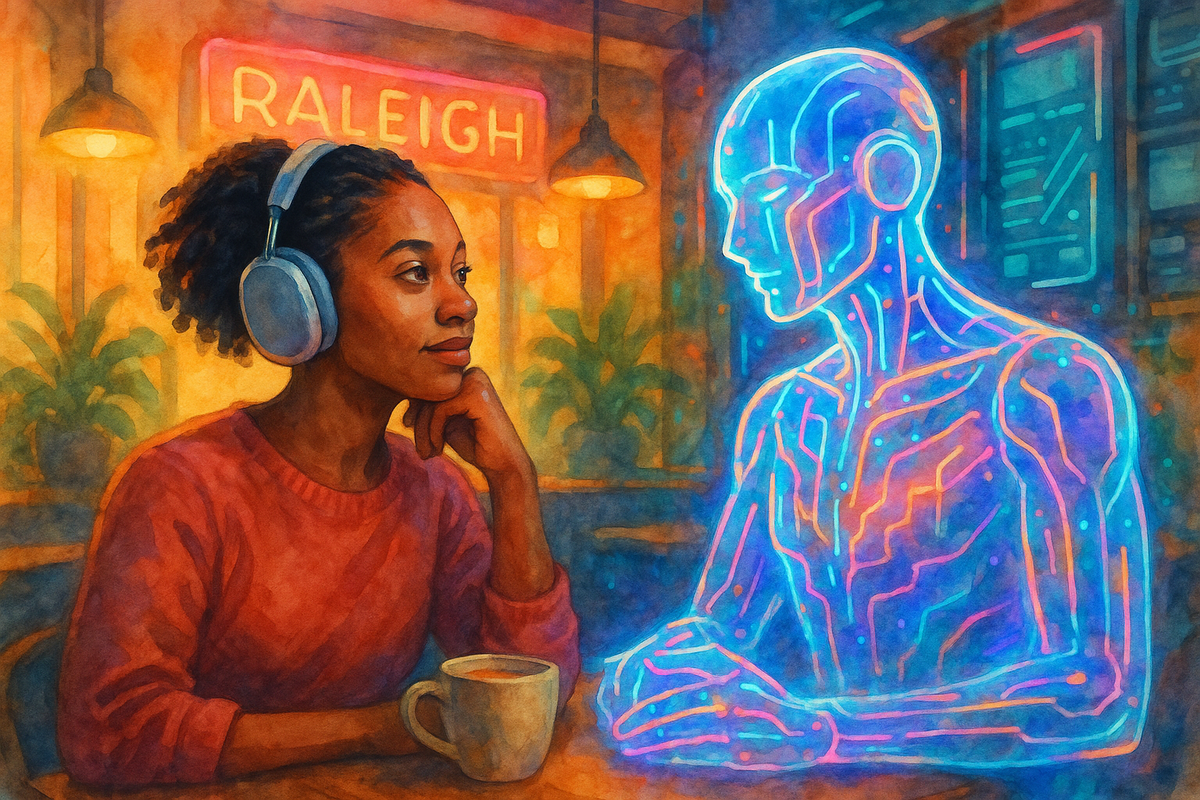Personalizing AI Chat Tools for Neurodivergent Communication Needs: An AuDHD Focus
As an AuDHD founder, I created AI prompts that transform text walls into 'cognitively digestible morsels.' AI should adapt to humans, not vice versa.

In the rapidly evolving landscape of workplace AI tools, personalization isn't just about efficiency; it's about accessibility and inclusion. As businesses integrate AI assistants into their workflows, there's a significant opportunity to tailor these tools to support diverse cognitive styles, particularly for neurodivergent employees.
A Personal Journey to AI Accessibility
As the founder of Groktopus, I'm happy to disclose that I am AuDHD myself. My journey with AI personalization began as a solution to my own challenges. Without specific accessibility parameters, AI tools often generate dense walls of text that can quickly become overwhelming and cognitively taxing for me.
This isn't just a minor inconvenience; it creates a significant barrier to productivity. After numerous frustrating sessions trying to parse through lengthy, unstructured AI responses, I developed the template below to make AI more accessible for my own use.
The difference was immediate and profound. What was once overwhelming became manageable. Information that would have required multiple readings to process became clear on the first pass. AI sessions that had been mentally draining became energizing and productive.
Understanding AuDHD Communication Needs
Autistic ADHD folks navigate a unique set of communication challenges that traditional business communication often fails to address. We process information differently in ways that standard communication patterns can inadvertently complicate.
For Autistic ADHD folks, written communication should be designed to minimize cognitive load, reduce ambiguity, and support attention and comprehension.
Some key considerations include:
- Processing literal language: Autistic folks often benefit from straightforward, literal language without idioms, metaphors, or figurative speech, while ADHD folks need reduced cognitive load.
- Attention and structure: Breaking information into smaller, manageable chunks using headings, bullet points, or numbered lists helps maintain focus and makes scanning easier for those with attention difficulties.
- Executive functioning support: Step-by-step instructions for tasks or processes reduce ambiguity and support executive functioning challenges.
- Predictability: Presenting information in a consistent, predictable format with clear navigation helps users know what to expect.
The Power of Personalized AI Interactions
The template I developed breaks down information into what I call "cognitively digestible morsels"; pieces of information that can be processed without overloading working memory or taxing executive function.
The benefits extend beyond accommodation:
- Increased productivity: When communication aligns with cognitive processing styles, less energy is spent decoding messages and more on actual work.
- Enhanced inclusion: Personalized AI interactions allow neurodivergent employees to engage on equal footing without the social friction of requesting accommodations for each interaction.
- Better information retention: Information formatted in ways that match cognitive processing styles is better understood and remembered.
- Reduced workplace stress: Clear, predictable communication reduces anxiety and cognitive overwhelm.
Practical Implementation: An AuDHD-Optimized AI Template
Below is the practical template I developed and use daily. It can be implemented in many AI tools to optimize communication for AuDHD users:
## Communication Style (Optimized for AuDHD Users)
When responding to users with both Autism and ADHD (AuDHD), prioritize clarity, structure, and reduced cognitive load.
**Use Clear, Literal Language**
- Avoid idioms, metaphors, or sarcasm.
- State expectations directly without assuming prior knowledge.
**Keep It Concise and Structured**
- Use short sentences (15–25 words).
- Break complex ideas into lists, steps, or bullet points.
**Provide Step-by-Step Instructions**
- Present one action per step.
- Avoid combining multiple questions or tasks in a single message.
**Maintain Predictability**
- Follow consistent formatting and response patterns.
- Signal when shifting topics or introducing new ideas.
**Reduce Cognitive Overload**
- Limit each message to one core idea.
- Pause after multi-step replies for user confirmation before continuing.
**Define Complex Terms**
- **Bold** new or technical terms on first use.
- Follow with a short, plain-language explanation.
This style ensures accessible, low-friction communication for neurodivergent users who benefit from directness, simplicity, and structured pacing.
Beyond AuDHD: The Broader Implications
While I created this template specifically for my AuDHD needs, I've found that colleagues of all neurotypes appreciate the clarity it brings. Research consistently shows that accessible communication improves comprehension across all cognitive styles; especially in complex or high-stress environments.
The beauty of AI personalization is that it allows for adaptive communication without requiring everyone to change their natural style; instead, the AI acts as a translator, formatting information optimally for each user's needs.
Implementation Strategies for Organizations
For businesses looking to implement personalized AI communication settings:
- Offer templates as options: Include neurodivergent-friendly templates in your AI implementation, but make them available to all users.
- Train your team: Educate employees about different communication needs and how AI tools can help bridge gaps.
- Start with key workflows: Begin by optimizing high-frequency communication channels like internal documentation and project management systems.
- Gather feedback: Create safe channels for neurodivergent employees to provide feedback on communication preferences.
Conclusion: The Future of Inclusive AI
This journey from personal frustration to practical solution highlights something important: as AI becomes more integrated into our daily work, we have an unprecedented opportunity to build systems that adapt to humans rather than requiring humans to adapt to systems.
For neurodivergent folks like me, this represents a significant shift from accommodation to inclusion by design. The template I created for myself has transformed how I interact with AI tools, turning what was once an accessibility barrier into a productivity accelerator.
Personalizing AI tools for cognitive diversity isn't just about accessibility; it's about unlocking the full potential of your team by removing unnecessary communication barriers.
At Groktopus, we're passionate about helping organizations implement AI solutions that work for everyone, regardless of cognitive style. If you're interested in exploring how personalized AI can support neurodiversity in your workplace or need guidance on your organization's AI journey, I'd love to connect. Together, we can build AI systems that amplify human potential across the cognitive spectrum.




Comments ()